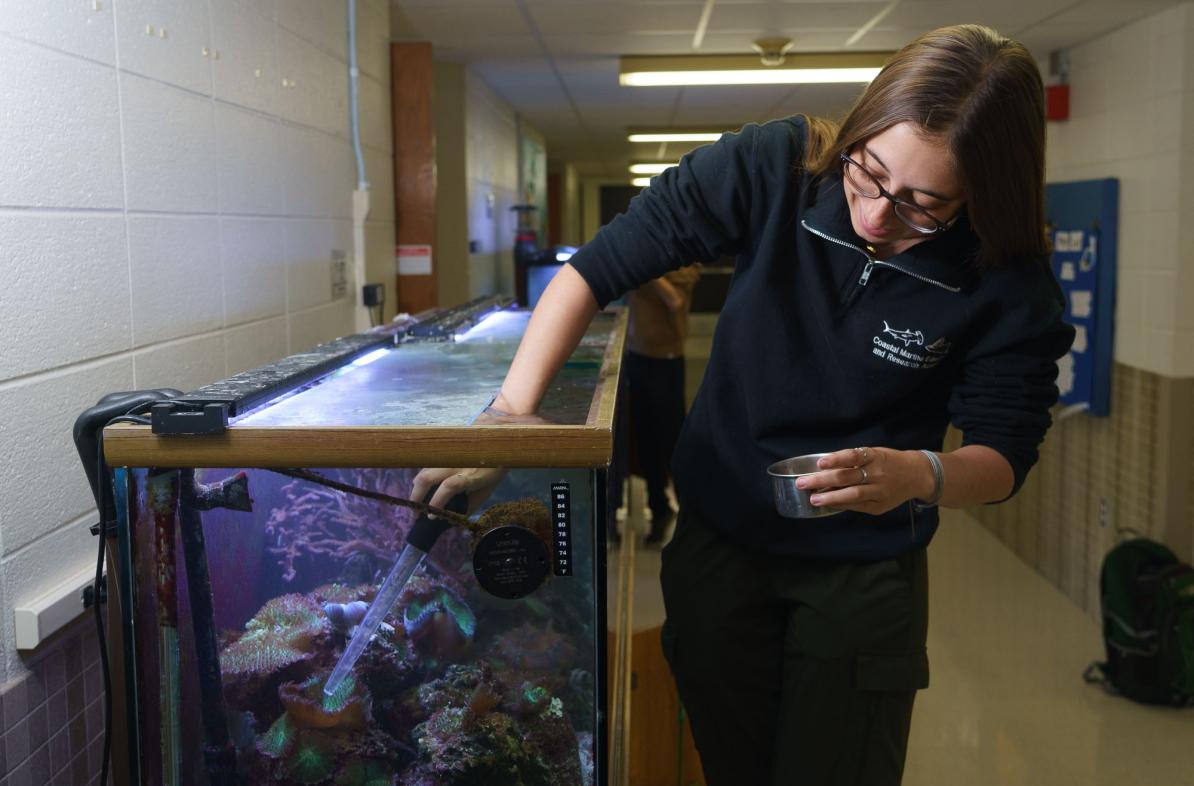ID

UW-Eau Claire's student Reef Team cares for clown fish, urchins and other marine life in saltwater aquaria
Authored on
UW-Eau Claire's student Reef Team cares for clown fish, urchins and other marine life in saltwater aquaria
Published on:
Intro text
Several times a week Alaina Steinmetz, Lucas Williams and others who share a passion for all things that live in the ocean gather to observe and learn from clownfish, urchins and other marine life they find interesting.
Sections
For the media
For the media
Image download





